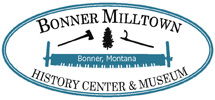 Norman Jacobson led eleven intrepid modern explorers on a hike to and on the Road to the Buffalo traversed by Meriwether Lewis, eight members of the Corps of Discovery and 17 horses on July 5, 1806.
Norman Jacobson led eleven intrepid modern explorers on a hike to and on the Road to the Buffalo traversed by Meriwether Lewis, eight members of the Corps of Discovery and 17 horses on July 5, 1806.
The “easy two mile round trip walk with 400’ elevation gain” challenged the hikers with its steep terrain. Although a GPS recorded a 500’ elevation gain in a mile, close to Norman’s contour map’s 400’ foot prediction, we weren’t convinced. Had possibly a zero been omitted?
Norm solved the problem: when leading a hiking group, if he feels tired, he stops and tells a story or points out an interesting fact. He encouraged us to do the same and gradually the quest for the summit became more of a trek of discovery with frequent stops to admire wildflowers, ponder over mysterious looking scat, marvel at huge lightning struck trees, learn stories of Native Americans, and make friends with fellow travelers.
Finally, the summit. But our time allotment of two hours roundtrip had been spent on the climb. What to do? Go on, we unanimously agreed. As promised, the Road to the Buffalo opened before us, still visible in the grassy meadow after leading thousands of travelers since time immemorial. We followed it for about a quarter of a mile before stopping for a final lesson on the trail illustrated by Ritchie Doyle’s copies of Lewis’ original maps.
The way down offered challenges for a new set of muscles, but we arrived at the cars feeling tired in a satisfied way. On a beautiful Montana spring day, we had reached back through the centuries to walk where Meriwether Lewis had followed the Road to the Buffalo carved by countless Native American travelers.
Sincere thanks to Norman for his enthusiasm and knowledge and to the hikers transformed by challenges into a group who not only saw but experienced the Road to the Buffalo.
